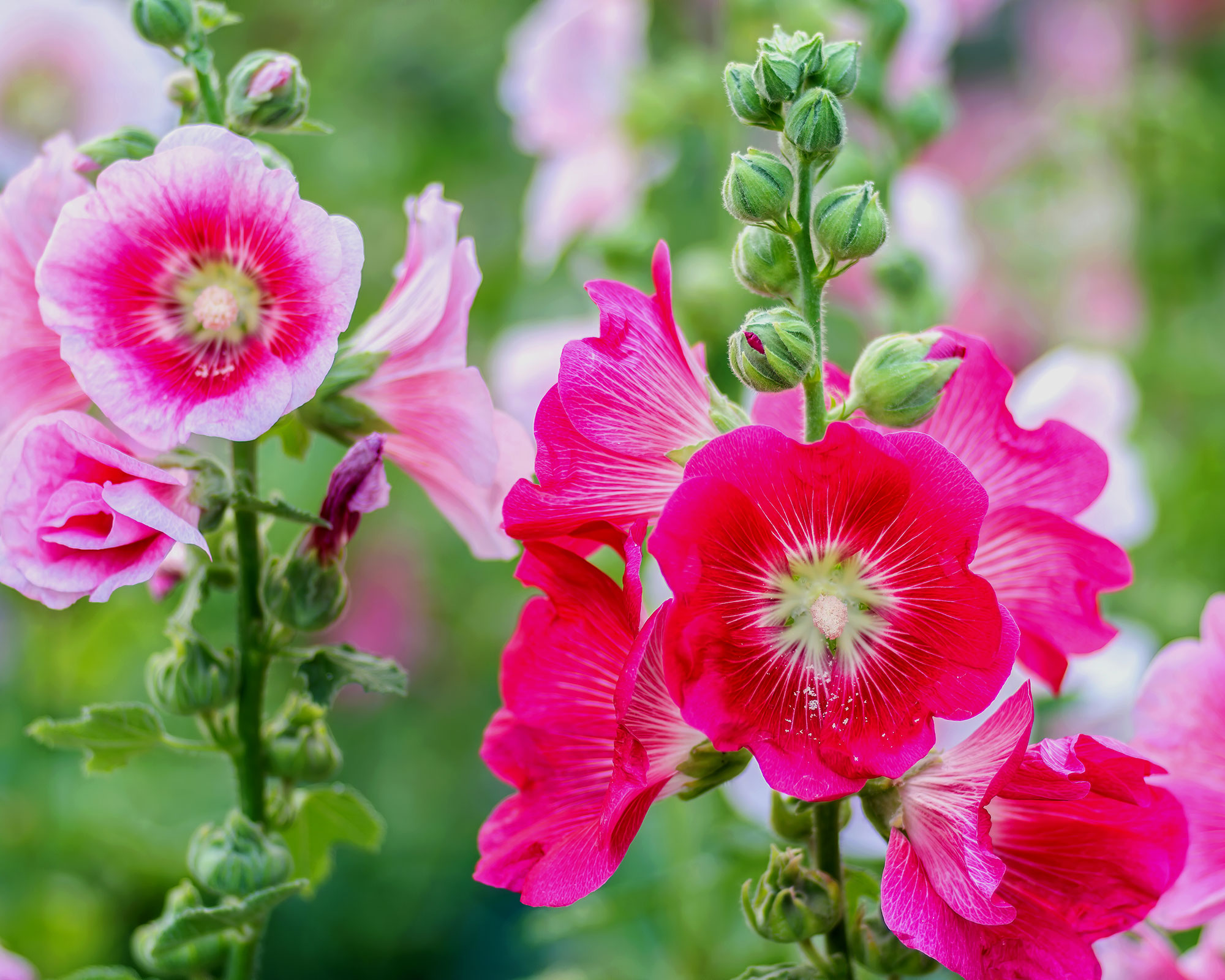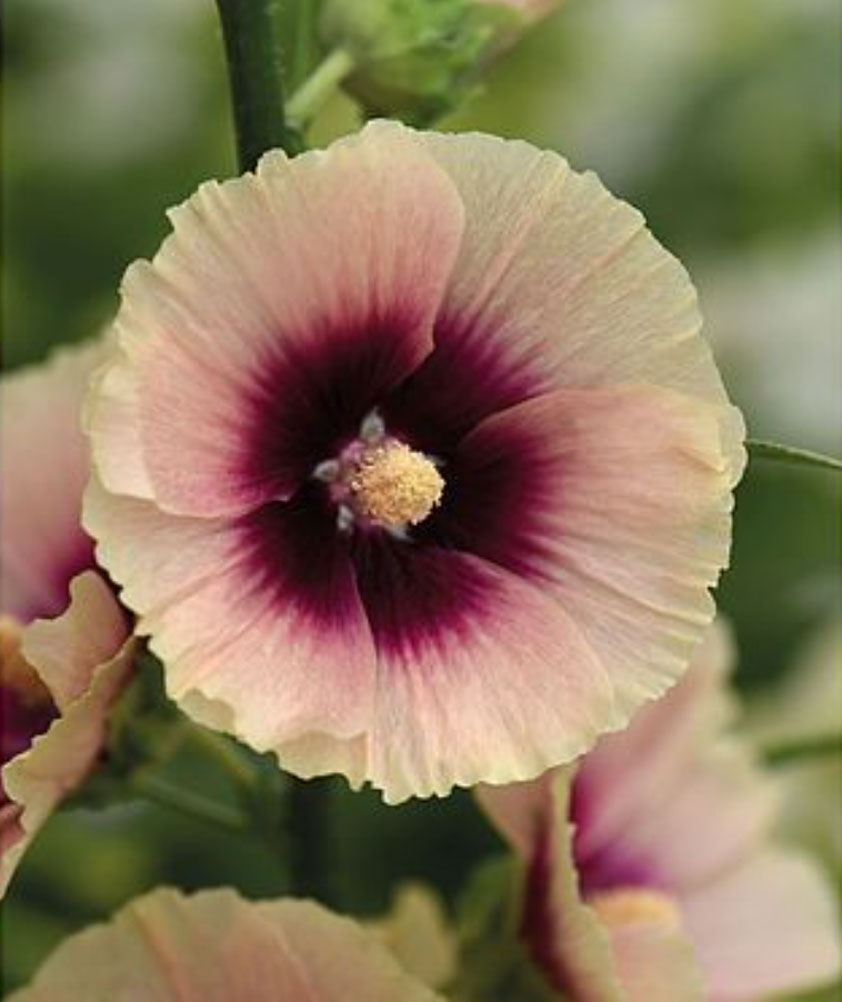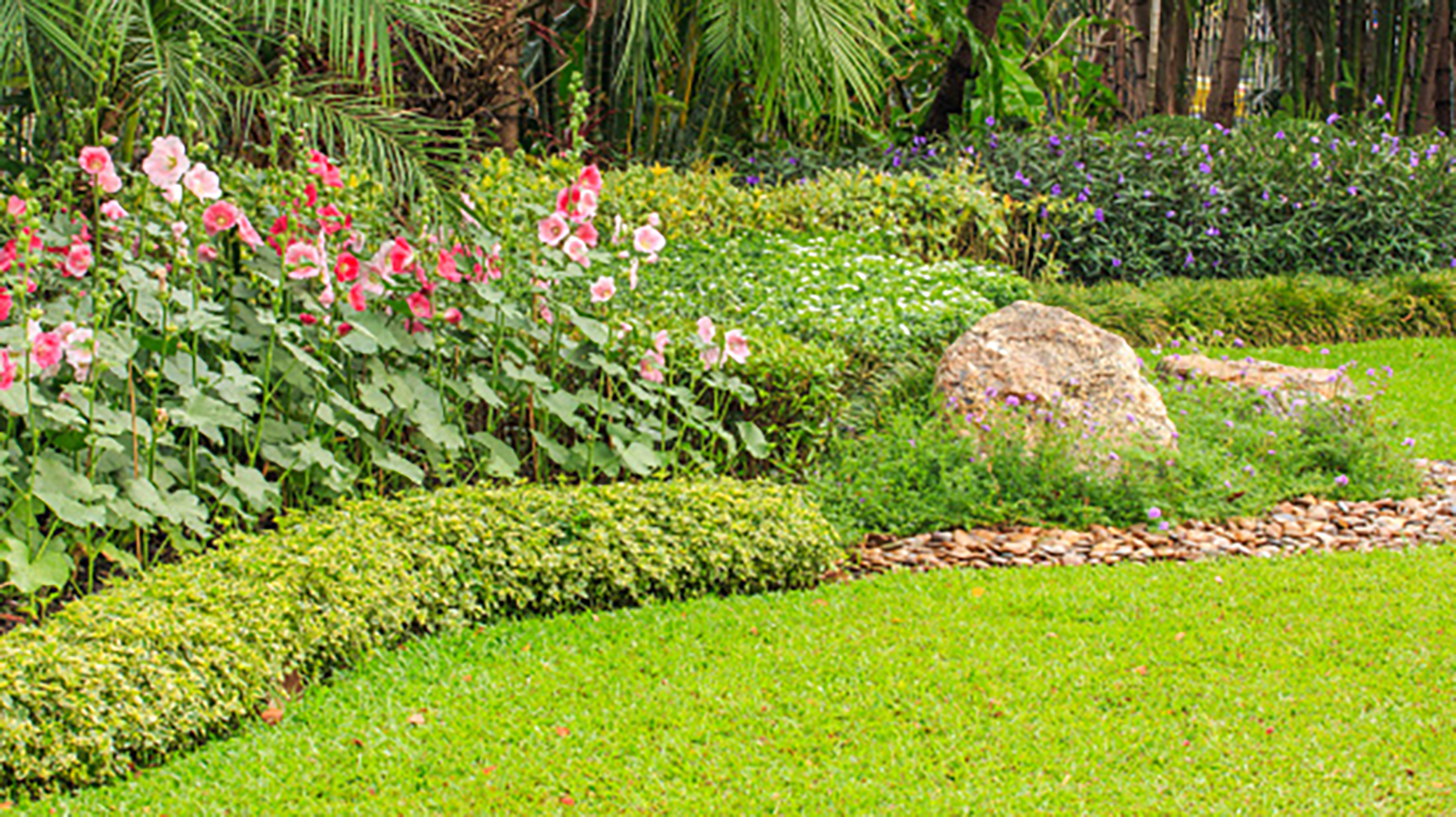When to plant hollyhock seeds – for a spectacular show
Discover when to plant hollyhock seeds to inject the backyard with English cottage garden charm


To create the traditional look of an English cottage garden, knowing when to plant hollyhock seeds is a must.
With its charming funnel-shaped flowers – which can be pink, red, purple, yellow, or white – blooming on tall stems that soar to 6ft (1.8m) or more in summer, hollyhocks (Alcea rosea) are an impressive sight. What’s more, the single-flowered varieties provide food for pollinators, such as bees, and pair well with foxgloves, bellflowers, and lupins.
Our guide has all you need to know about when to plant these backyard beauties to fulfill your flower bed ideas and enjoy their height and color in summer and early fall.

When to plant hollyhock seeds
Hollyhocks are best grown as biennials in order to reduce their susceptibility to a fungal disease called rust.
‘From my perspective, hollyhocks are now classified as short-lived perennials that are often grown as biennials,’ says Jonathan Sheppard, who holds the UK national collection of hollyhocks. ‘This means they produce flowers in their second year.’
Alcalthaea are fantastic short-lived perennials that are closely related to hollyhocks and well worth trying in the garden, too.
This is the inside track on when to plant hollyhock seeds as well as alcalthaea.

Plant hollyhock seeds in spring
Hollyhocks are easy to grow from seed. As for when to plant hollyhock seeds, they can be sown under cover in March, April, or May or sown direct into soil outside in May, June, or July. Being biennial, they won’t bloom until next year.\
‘When sown indoors in spring, barely cover the seed with soil,’ advises Kelly Funk, President of Park Seed, ‘while maintaining a temperature of 70°F (21°C). Germination takes 10 to 14 days. ’If your greenhouse doesn’t get that hot, 60°F (15°C) is fine and can be achieved by using a propagator.’
‘I do a sowing of hollyhocks around April,’ says Jonathan Sheppard, ‘so the plants then establish themselves and get planted out, but won’t flower until the following year.’
The seeds are fairly large and are best sown into module trays: sowing one seed per module.
Plant hollyhock seeds in fall
It’s also possible to plant hollyhock seeds in late summer or fall. ‘I often do a sowing under cover around September,’ says Jonathan Sheppard. ‘This is essentially to try to cheat that biennial nature and get flowers within 12 months. I sow in 3in (7cm) pots, so that the hollyhocks have a much better chance of flowering in their first summer, after they get planted out the following year.’
The subsequent young seedlings in pots can be overwintered in a cold greenhouse or cold frame or on a cold windowsill.
Plant hollyhock seeds two years running
Hollyhocks readily self-sow, providing you with free plants (if you don’t deadhead them). However, being biennial, you must do a second sowing next year in order to ensure flowers every year (rather than flowers every other year). If you grow foxgloves, this is the same two year principle.
During spring or fall, the seedlings that the plants have sown themselves around the backyard can be moved into the position you’d like them to grow.
There is a huge range of hollyhocks available to sow. Some of Jonathan Sheppard’s favorites include ‘Mars Magic’ (‘a vibrant red variety that really pops in the garden’), ‘Halo Lavender’ (‘a rich purple colored hollyhock with a light center’), and ‘Peaches ’n' Dreams’ (‘a double variety whose blooms can rival those from growing peonies.’)
When to plant alcalthaea
Alcalthaea are the gorgeous offspring of hollyhock (Alcea) and marshmallow (Althaea). Bred for flower power and reduced susceptibility to rust (a fungal disease that can plague hollyhocks), they are a triumph. Being healthier, these perennials live a lot longer than common hollyhocks and produce wider, branching plants that form a goblet shape. Capable of 8ft (2.4m), they bloom for a long time: sometimes from July into October, making them a great addition to the border.
Buy alcalthaeas, such as beautiful ‘Parkallee’, as ready-grown pot plants and plant them in well-drained borders in sun during spring or early summer or in the fall.
How long does it take for hollyhock seeds to sprout?
Hollyhocks take around 10 to 14 days to germinate and then it’s another three to four weeks before they are ready for pricking out. Make sure that hollyhock seeds aren’t planted too deeply if you’re sowing them indoors in spring. The barest covering of soil is necessary.
Do hollyhocks flower in the first year?
Hollyhocks don’t flower in the first year. This is because they are biennials, establishing their roots and foliage in the first year and producing flowers in their second year. For flowers every year, plant hollyhock seeds two years running. When hollyhocks are finished flowering, you can deadhead them or let them go to seed to encourage returning blooms.
Sign up to the Homes & Gardens newsletter
Design expertise in your inbox – from inspiring decorating ideas and beautiful celebrity homes to practical gardening advice and shopping round-ups.

Lucy Searle has written about interiors, property and gardens since 1990, working her way around the interiors departments of women's magazines before switching to interiors-only titles in the mid-nineties. She was Associate Editor on Ideal Home, and Launch Editor of 4Homes magazine, before moving into digital in 2007, launching Channel 4's flagship website, Channel4.com/4homes. In 2018, Lucy took on the role of Global Editor in Chief for Realhomes.com, taking the site from a small magazine add-on to a global success. She was asked to repeat that success at Homes & Gardens, where she has also taken on the editorship of the magazine.
-
 Plants never to grow next to fruit trees
Plants never to grow next to fruit treesExpert advice on which plants to keep away from fruit trees to encourage a healthy harvest
By Jacky Parker Published
-
 Martha Stewart's tips for arranging daffodils are unbelievably simple and effective – it's the only flower advice you need this springtime
Martha Stewart's tips for arranging daffodils are unbelievably simple and effective – it's the only flower advice you need this springtimeMartha shows us that we can create gorgeous bouquets of this seasonal flower by simply trimming the stems and placing them in specific vases
By Hannah Ziegler Published